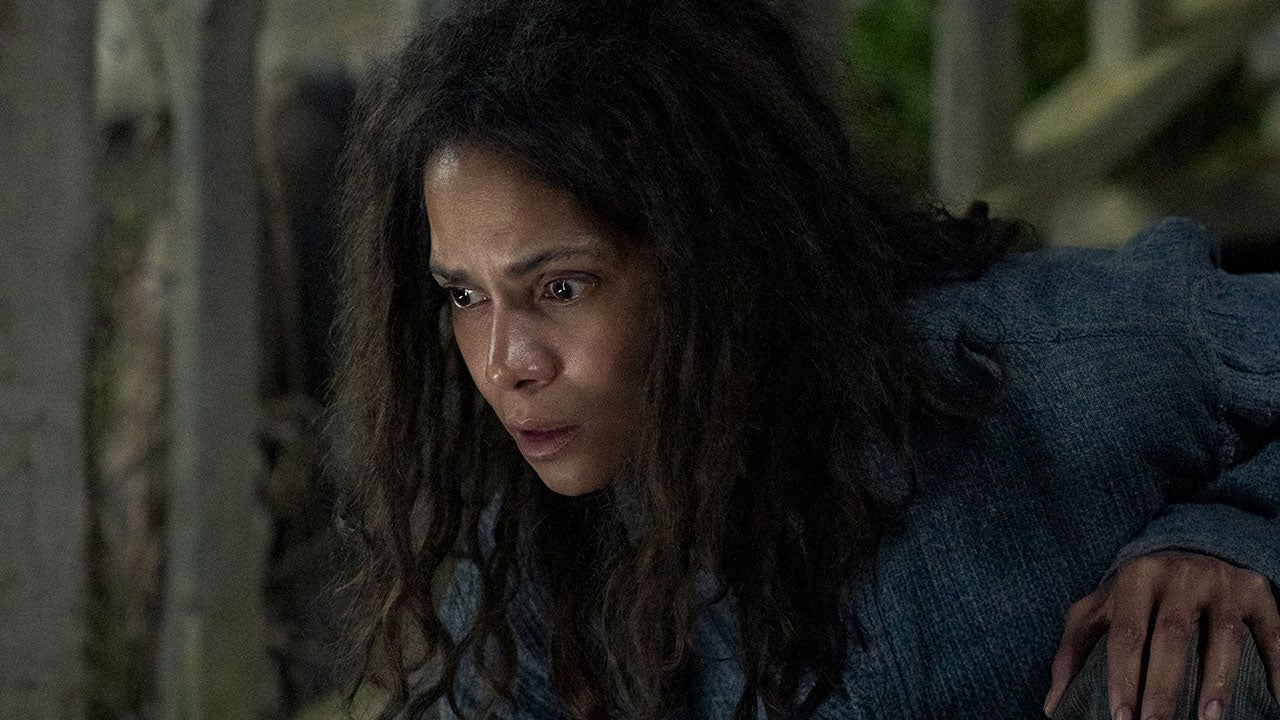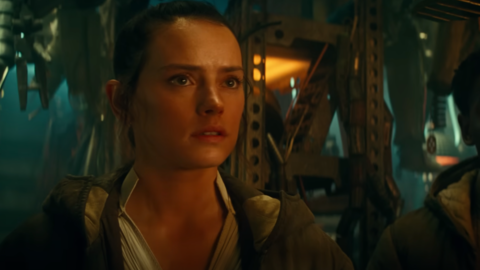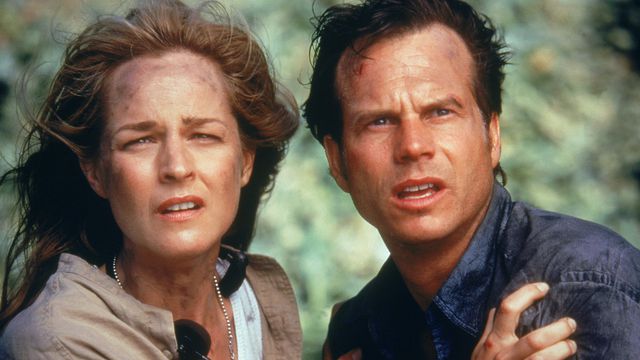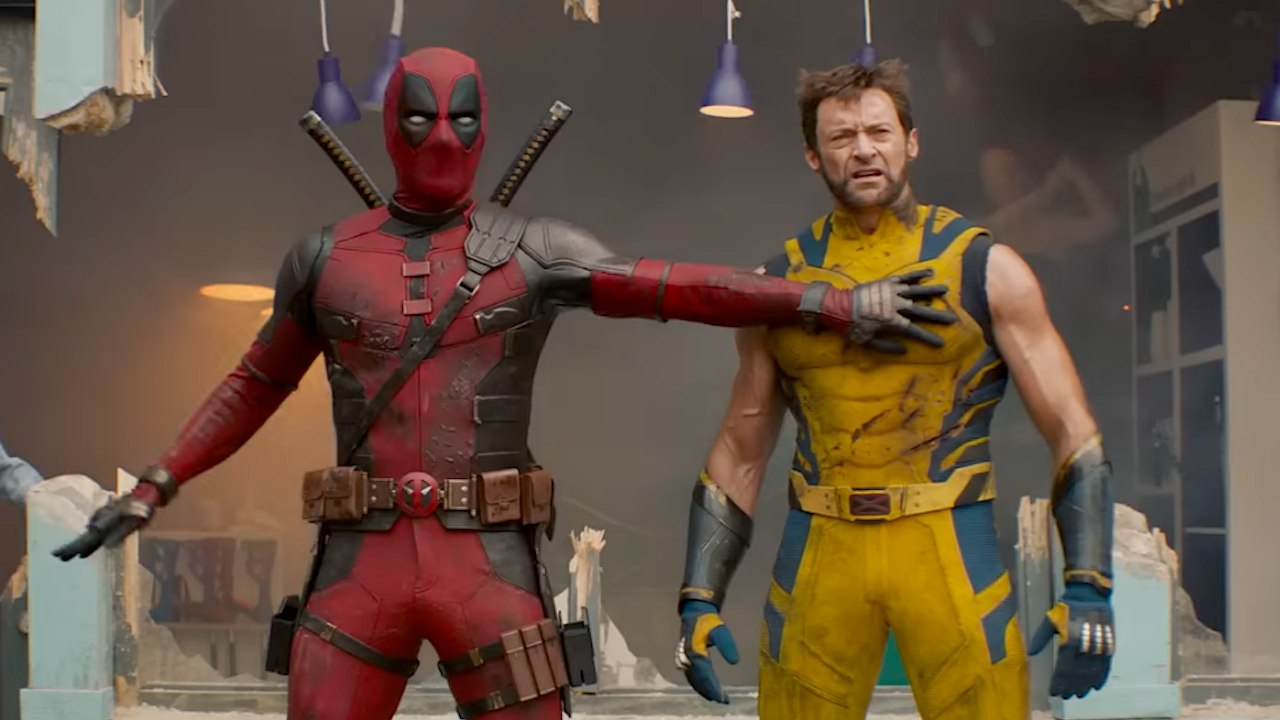This article is part of IGN’s Fantastic Fest coverage and contains detailed spoilers for its opening night film, Never Let Go, starring Halle Berry and directed by Alexandre Aja.
Are you wondering if Never Let Go has a post-credits scene? We’ll tell you right here: It doesn’t have a mid- or post-credits scene of any kind. Again, spoilers follow from here…
A common misconception over ending explained…s… — that term was never meant to be pluralized — is that they are definitive when, really, it’s just another critic offering you another opinion in a format that doesn’t happen to be a review. I say that because many films do not have a clear cut-and-dried ending that means the same thing to everyone who watches it. Alexandre Aja’s latest, Never Let Go, falls so much into that camp that Halle Berry (the film’s star) introduced it at Fantastic Fest with the note “decide what it means for yourself.” And, anecdotally speaking, everyone I spoke to after the screening had a completely different take so far as what the film’s ending actually means.
With that tremendous grain of salt in mind, let’s dig in!
Never Let Go: What Is the Evil?
A decent hunk of what makes Never Let Go successful is that you believe Mama (Berry) is completely off her rocker right up until you realize she isn’t. Except she is. Or maybe not? Let me explain.
Mama lives alone in a cabin in the middle of nowhere with her two sons Samuel (Anthony B. Jenkins) and Nolan (Percy Daggs IV). The family must stay in their home at all times unless they are grasping a rope tied firmly to the cabin’s foundation. You see, when the Evil started taking over the world, her father built the house for her mother and gave her the ropes so that she could wander the forest. We’re not going to talk about the logistical issues there — they come up in the film — but what you do need to know is that the Evil always has some kind of snake-like quality, regardless of what form it takes, and that neither of Mama’s boys can see these creatures. Only Mama says she can.
Now, the biblical implications here are clear from the start, as is the warning of what can happen when one holds too tightly to their beliefs without asking healthy questions. We know that Mama killed her husband, her mother, and her father when the Evil touched them; we know that Mama had a dark past and was “saved,” leaning into the trope of “born again” Christians becoming unwaveringly devout; and we know that Nolan is starting to have questions about the rest of the world.
Those questions, and Mama’s decision to kill the family dog so they don’t starve (he’s actually OK, don’t worry) result in Nolan hacking through Mama’s rope, leaving her exposed to the Evil. (Note: Nolan, at this point, does not believe in the Evil and is trying to show Mama that they can venture farther for food if she would simply believe him.) Rather than be touched by the Evil and thus, she believes, be forced to murder her sons with her own hands, she chooses to slit her own throat instead.
Never Let Go Ending Explained
After Mama’s death — which occurs about halfway through the film, leaving young Jenkins and Daggs IV to carry the film on their own to remarkable success — things start to go downhill. And know that’s saying something, because this family is literally starving to death. There is a glimmer of hope when Nolan runs as far and screams as loud as he can while remaining tethered in a last-ditch effort to save his brother, who is dying of starvation faster than he is.
The boys are given their first real glimpse of the outside world when a hiker follows Nolan to the house after hearing his calls. But while Nolan sees the hiker as their savior, Samuel immediately believes he has started to see demons as his mother had. The two argue, Samuel shoots the man through the belly, and Nolan ultimately steals his pack to for the food he knows the man has.
It’s at this moment where Never Let Go shifts gears. Nolan eats the food freely, savoring it so that he may share it with his brother. Samuel adamantly refuses at first, but later greedily scarfs down the food while Nolan sleeps. You wonder, in this moment, if the can of ravioli and the other foods are the proverbial forbidden apple, and if Nolan and Sam — who have strong Cain and Abel vibes from the jump — have just given in to the Evil’s temptation.
But they didn’t. Life-saving food is simply life-saving food, and the hiker was murdered for nothing.
Later, the hiker’s daughter shows up and kicks off the beginning of the end. Samuel, now apparently thinking clearly because he has food in his belly, chases the hiker’s daughter while apologizing for killing her father. She runs past the end of the rope, Samuel believes that she is real and untethers himself, but then she goes creepy-crawly up a tree and jumpscares him from behind, vomiting a centipede at him which goes down his throat. The Evil was real.
Except it wasn’t. But it was. (I swear I have a point.)
Now touched by Evil, Samuel returns to their home and sets it ablaze, locking Nolan in his mother’s room. Later, he takes a selfie with his mother’s old polaroid with the burning cabin in the background as his brother — he believes — burns to death. However, Nolan stows away in the cabin’s crawl space after confronting the Evil disguised as his mother. Instead of choosing hatred or fear, Nolan hugs Mama-Evil, who then morphs into regular Evil (a sort of snake humanoid) and hugs him in return. Both boys survive the fire and are airlifted out of the woods, with the family dog chasing after the helicopter safe and sound.
So! What does all that mean? Was Mama crazy? Was she not crazy? Is the Evil real or is it fake? The answer to all of that is “yes.”
Firstly, Berry noted in the post-screening Q&A that it’s up to you to decide if “the Evil is generated from her because she is a schizophrenic” or if she is simply the way that she is because “motherhood is crazy-making.” Given that her mother before her saw the same things that she did, and schizophrenia runs in families, it seems pretty likely that Mama (and Grand Mama) needed psychiatric help that they weren’t receiving. As for the Evil, and the boys eventually seeing it, that boils down to a few things — all of which were key to my enjoyment of the film.
One of the last shots of the film is the developed polaroid of Samuel and the house sitting in the cabin’s ashes. In it, you see the Evil’s serpent hand on his shoulder, ruling him. It is real to him because he manifested it. Just as he manifested the young girl who claimed to be the hiker’s daughter. When he is dying, the hiker calls out a woman’s name, but it is never confirmed that he is calling for his daughter, nor does he mention having a child waiting for him while begging for his life.
Samuel and Nolan have different reactions to the Evil because they choose to. Samuel is devout and unquestioning, and insists on rigidity in the same way Mama did (and showed no schizophrenia symptoms prior). Nolan is curious and hopeful, asking healthy and reasonable questions about the world surrounding him throughout the film. The Evil isn’t in question. It’s everywhere, just as Mama said. But Mama and Samuel chose to give the Evil power over them — it ruled their every waking moment. Meanwhile, Nolan chose curiosity, and when looking the Evil in its face, chose love.
Does Never Let Go Have a Post-Credits Scene?
As stated earlier, there are no additional scenes once the credits start rolling.
But what do you think of Never Let Go? Let’s discuss in the comments!








